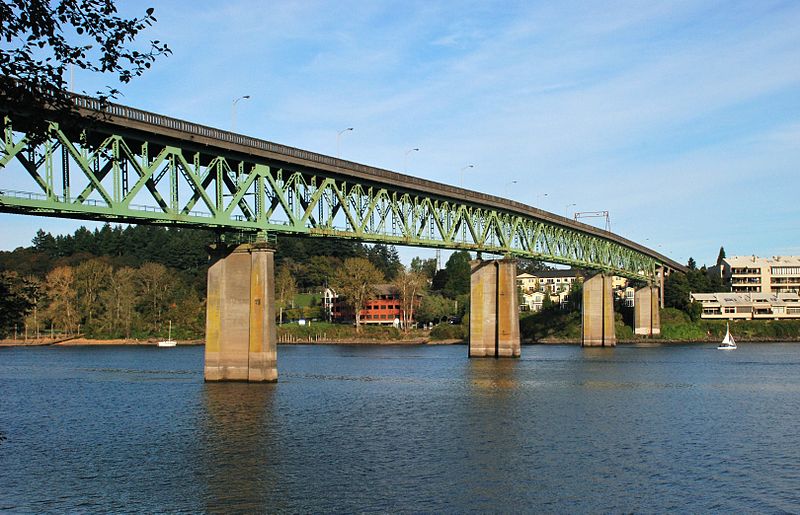America’s Bridges Falling Down
In Portland, Ore., where I live, a river runs through it.
The Willamette River neatly bisects the city and that, of course, means lots of bridges. Of particular interest is the Sellwood Bridge, a truss bridge that is one of the main thoroughfares between two highly-populated Portland neighborhoods. It is also the busiest two-lane bridge in Oregon. The reason that it's of interest is that the Sellwood Bridge is falling apart.

The Sellwood Bridge
The bridge was built in 1925 and cost $541,000. In 2004, the span really started showing its age. The discovery of cracks in both concrete approaches meant lowering the weight limit from 32 tons to 10 tons, banning its use by many trucks and buses and adding to our local traffic congestion. It also motivated the city to start planning a replacement bridge, due to begin construction next year. Other bridges around the city are also in need of repair or replacement.
Portland is not the only part of the country with bridge problems. The Center for American Progress (CAP), a Washington DC-based think tank, has published an article in response to President Obama's introduction of the American Jobs Act that would invest $50 billion for critical infrastructure improvement — including bridges.
According to the Federal Highway Administration, there are about 150,000 bridges in the country that are "structurally deficient" or "functionally obsolete." The poster child for the consequences of neglect is the collapse of the center span of the Interstate 35W bridge over the Mississippi River in Minneapolis on July 3, 2008. But all over America, there are potential disasters waiting to happen.
The article includes a chart showing the top 10 states with the most deficient bridges, the increase in the number of unemployed since the recession began in 2008, and the number of unemployed workers per bridge in need of repair.
For example, Pennsylvania, which tops the list, has nearly 10,000 bridges in need of repair. The increase in state's number of unemployed from 2008 to 2010 was 252,912, making a total of 26 workers per bridge in need of repair. The other nine states show a similar pattern resulting in an average of 37 unemployed workers per bridge.
Says the CAP article, "If work began on just a quarter of these bridges with funds from the American Jobs Act thousands of unemployed construction and skilled trades workers could return to work."
But more than just unemployed workers will be involved.
Manufacturers will have to make replacement or new parts, involving many additional workers including scientists and engineers. For example, in North Carolina, some 75 experts are involved in installing a temporary, manufacturing bridge to restore normal traffic to NC 12 on the Outer Banks. In Minnesota, U.S. Senator Al Franken, D-Minn, is backing a plan to allocate additional state funds to repair the state's roads and bridges despite cuts in other state spending — a plan that involves both unemployed workers and manufacturers. Just a quick glance at The BridgeSite will give you an idea of the variety of products and manufacturers involved in servicing this market — everything from advanced composites, seismic dampers and decking and grating, to fully prefabricated bridges. Many of the products involve advanced manufacturing technology.
Overall it seems that an investment in rebuilding America's roads and bridges will have a ripple effect — not only providing jobs for thousands of unemployed workers, but helping manufacturers to weather the current economic crisis as well.










